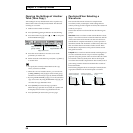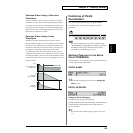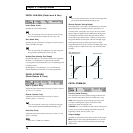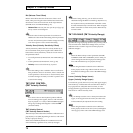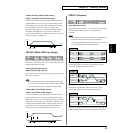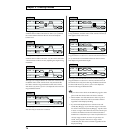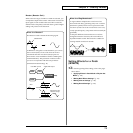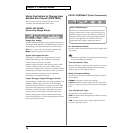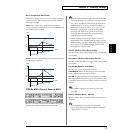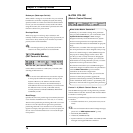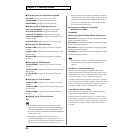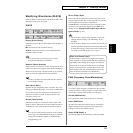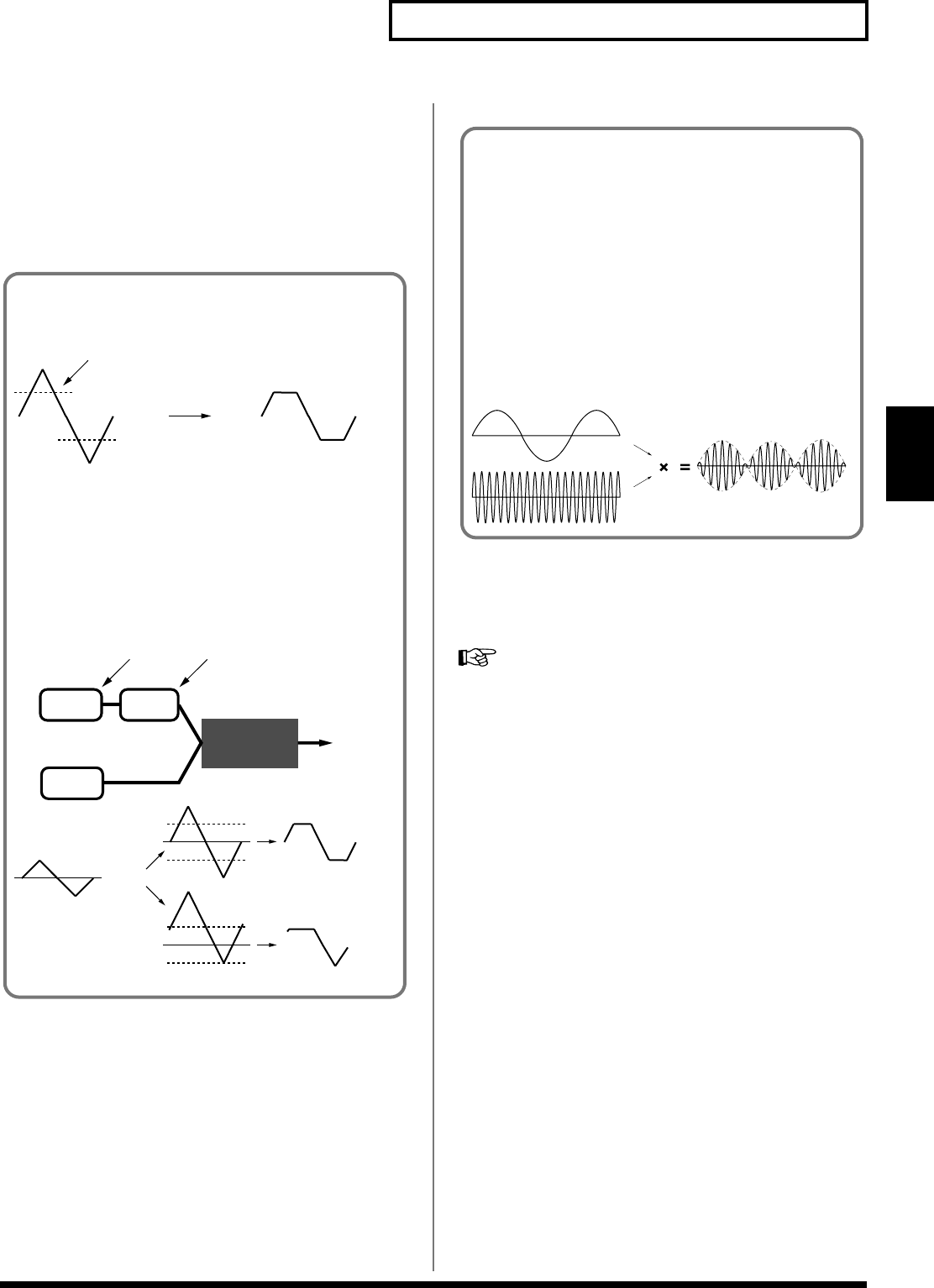
75
Chapter 5. Creating Patches
Chapter 5
Booster (Booster Gain)
When a Structure Type of TYPE 3 or TYPE 4 is selected, you
can adjust the depth of the booster. The booster increases the
input signal in order to distort the sound. This creates the
distortion effect frequently used with electric guitars. Higher
settings will produce more distortion.
Setting Effects for a Patch
(EFFECTS)
For details regarding effect settings, refer to the pages
shown below.
• “Applying Effects in Patch Mode or Rhythm Set
Mode” (p. 106)
• “Making Multi-Effects Settings” (p. 114)
• “Making Chorus Settings” (p. 156)
• “Making Reverb Settings” (p. 158)
What is a Booster?
The Booster is used to distort the incoming signal.
fig.05-30.e
In addition to using this to create distortion, you can use
the waveform (WG1) of one of the Tones as an LFO
which shifts the other waveform (WG2) upward or
downward to create modulation similar to PWM (pulse
width modulation). This parameter works best when
you use it in conjunction with the Gain parameter
(PATCH/WAVE/WAVE) (p. 81).
fig.05-31.e
Booster level
TVA
WG1
WG2
Booster
Adds to WG1
Shift in waveform by WG1
Distorted area of the
Waveform changes
WG2
Uses WG1 as LFO
Adjusts WG1 output
What is a Ring Modulator?
A ring modulator multiplies the waveforms of two
Tones with each other, generating many new overtones
(inharmonic partials) which were not present in either
waveform. (Unless one of the waveforms is a sine wave,
evenly-spaced frequency components will not usually be
generated.)
As the pitch difference between the two waveforms
changes the harmonic structure, the result will be an
unpitched metallic sound. This function is suitable for
creating metallic sounds such as bells.
fig.05-32




